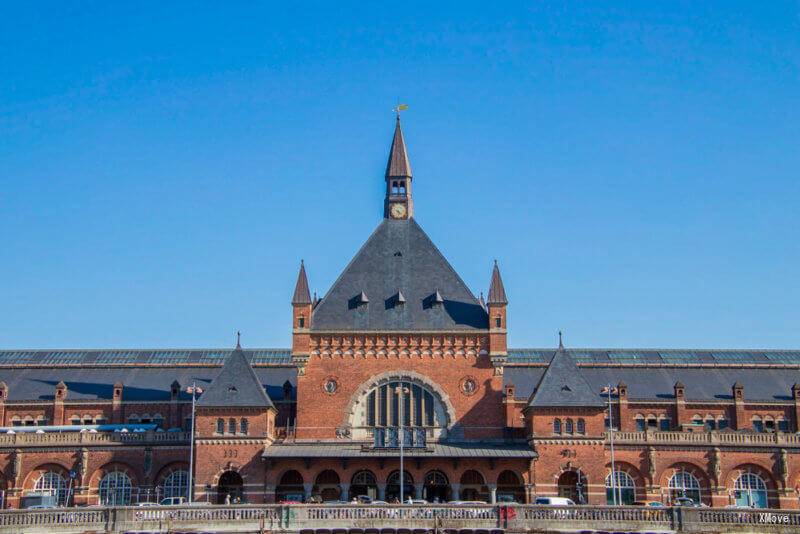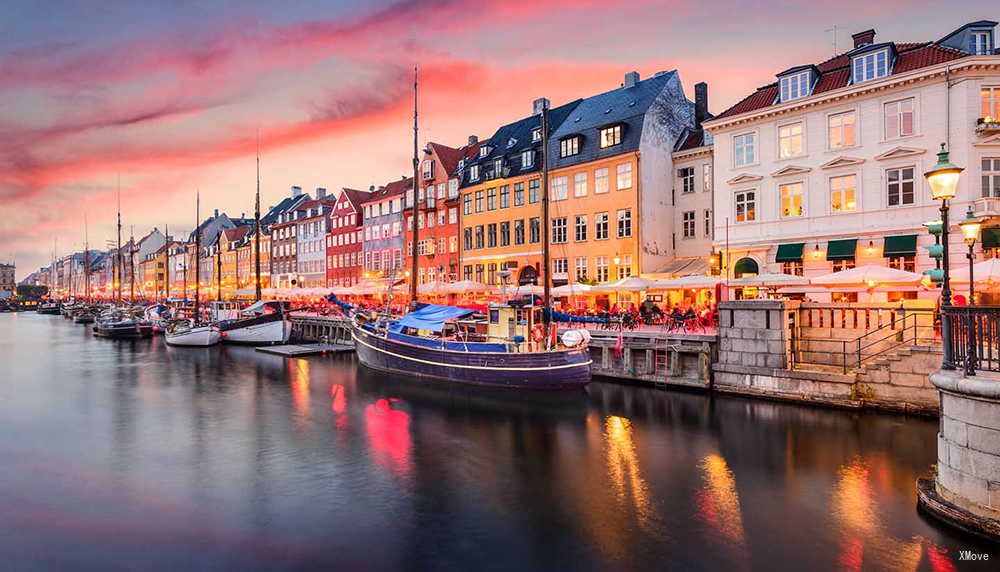Aarhus to Köbenhavn H: Trains, Buses, Fares, Today's Connections, Routes, Duration, Types of Trains, Station Guides, Tips, Journey
Denmark Train Tickets
Train schedule Aarhus to Köbenhavn H
Popular train routes departing from Aarhus
* Muenchen Hbf(München Hbf)
* Nuernberg Hbf(Nürnberg Hbf)
* Hamburg Central(Hamburg Hbf)
* Berlin Central Station(Berlin Hbf)
* Randers St
* Odense St
* Frederikshavn St
Popular train routes arriving in Aarhus
* Ramstein
* Stade
* Muenster Westf Hbf(Münster(Westf)Hbf)
* Strasbourg
* Salzburg Central(Salzburg Hbf)
* Apeldoorn
* Karlsruhe Central(Karlsruhe Hbf)
Popular train routes departing from Köbenhavn H
* Odense St.
* Amsterdam Centraal
* Odense St
* Rendsburg
* Hamburg Central(Hamburg Hbf)
* Husum(S) Station(Husum Station)
* Stuttgart Central(Stuttgart Hbf)
Popular train routes arriving in Köbenhavn H
* ஃபிராங்க்ஃபர்ட்(Frankfurt)
* வுப்பர்டல் எச்.பி.எஃப்(Wuppertal Hbf)
* கோதன்பர்க் மத்திய(Göteborg C)
* ஆர்ஹஸ்(Aarhus)
* Wismar
* ஃபுல்டா(Fulda)
* சுர்(Chur)
Köbenhavn H
Located in the city centre, all trains pass through this station or start here. There are many cities in Denmark that can be reached by trains. In addition to the Danish cities, there are also famous cities such as Malmö in Sweden, Hamburg in Germany and Amsterdam in the Netherlands. All light rail express trains (except F line) all pass this site
There are many trains from Copenhagen to various cities in Denmark. There are trains to all parts of the country, including 12 minutes to the airport, and some important attractions, City Hall, pedestrian street, round tower and port are all within walking distance. Going to the little mermaid is relatively far away.
The international route is Copenhagen → Hamburg, passing through Lübeck. Or the night train departs from Copenhagen to Hamburg, Amsterdam, Frankfurt, Dresden, Prague and other places, or express trains to the Nordic cities of Gatpo Stockholm.
Köbenhavn H - Station Guide | Departures and Arrivals | Popular Routes

Aarhus (, also US: , Danish: [ˈɒːhuːˀs] ; officially spelled Århus from 1948 until 1 January 2011) is the second-largest city in Denmark and the seat of Aarhus municipality. It is located on the east coast of the Jutland peninsula, in the geographical centre of Denmark, 187 kilometres (116 mi) northwest of Copenhagen and 289 kilometres (180 mi) north of Hamburg, Germany. The inner urban area contains 273,077 inhabitants (as of 1 January 2018) and the municipal population is 340,421 (as of 2018). Aarhus is the central city in Business Region Aarhus and in the East Jutland metropolitan area, which had a total population of 1.378 million in 2016.The history of Aarhus began as a fortified Viking settlement founded in the 8th century and with the first written records stemming from the bishopric seated here from at least 948. The city was founded on the northern shores of a fjord at a natural harbour and the primary driver of growth was for centuries seaborne trade in agricultural products. Market town privileges were granted in 1441, but growth stagnated in the 17th century as the city suffered blockades and bombardments during the Swedish Wars. In the 19th century it was occupied twice by German troops during the Schleswig Wars but avoided destruction. As the industrial revolution took hold, the city grew to become the second-largest in the country by the 20th century. Today, Aarhus is at the cultural and economic core of the region and the largest centre for trade, services and industry in Jutland. The city ranks as the 92nd largest city in the European Union, and as number 234 among world cities. It is also a top 100 conference city in the world. Aarhus is the principal industrial port of the country in terms of container handling and an important trade hub in Kattegat. Major Danish companies have based their headquarters here and people commute for work and leisure from a wide area in Region Midtjylland. It is a centre for research and education in the Nordic countries and home to Aarhus University, Scandinavia's largest university, including Aarhus University Hospital and INCUBA Science Park. Being the Danish city with the youngest demographics, with 48,482 inhabitants aged under 18, Aarhus is also the second fastest growing Danish city, with an average growth of 4,500 people per annum since 2008.Aarhus is known for its musical history. In the 1950s, many jazz clubs sprang up around the city, fuelled by the young population. By the 1960s, the music scene diversified into rock and other genres. In the 1970s and 1980s, Aarhus became the centre for Denmark's rock music, fostering many iconic bands such as Kliché, TV-2 and Gnags. Aarhus is home to the annual eight-day Aarhus Jazz Festival, the SPoT Festival, and the NorthSide Festival. In 2017, Aarhus was European Capital of Culture along with Paphos in Cyprus.
Aarhus - Guide, Attractions, Tours, Sightseeings | Train from/to Aarhus | Popular RoutesCopenhagen (Danish: København [kʰøpm̩ˈhaʊ̯ˀn] ) is the capital and most populous city of Denmark. As of July 2018, the city has a population of 777,218 (616,098 in Copenhagen Municipality, 103,914 in Frederiksberg Municipality, 43,005 in Tårnby Municipality, and 14,201 in Dragør Municipality). It forms the core of the wider urban area of Copenhagen (population 1,320,629) and the Copenhagen metropolitan area (population 2,057,737). Copenhagen is situated on the eastern coast of the island of Zealand; another small portion of the city is located on Amager, and it is separated from Malmö, Sweden, by the strait of Øresund. The Øresund Bridge connects the two cities by rail and road. Originally a Viking fishing village established in the 10th century in the vicinity of what is now Gammel Strand, Copenhagen became the capital of Denmark in the early 15th century. Beginning in the 17th century it consolidated its position as a regional centre of power with its institutions, defences and armed forces. After a plague outbreak and fire in the 18th century, the city underwent a period of redevelopment. This included construction of the prestigious district of Frederiksstaden and founding of such cultural institutions as the Royal Theatre and the Royal Academy of Fine Arts. After further disasters in the early 19th century when Horatio Nelson attacked the Dano-Norwegian fleet and bombarded the city, rebuilding during the Danish Golden Age brought a Neoclassical look to Copenhagen's architecture. Later, following the Second World War, the Finger Plan fostered the development of housing and businesses along the five urban railway routes stretching out from the city centre. Since the turn of the 21st century, Copenhagen has seen strong urban and cultural development, facilitated by investment in its institutions and infrastructure. The city is the cultural, economic and governmental centre of Denmark; it is one of the major financial centres of Northern Europe with the Copenhagen Stock Exchange. Copenhagen's economy has seen rapid developments in the service sector, especially through initiatives in information technology, pharmaceuticals and clean technology. Since the completion of the Øresund Bridge, Copenhagen has become increasingly integrated with the Swedish province of Scania and its largest city, Malmö, forming the Øresund Region. With a number of bridges connecting the various districts, the cityscape is characterised by parks, promenades and waterfronts. Copenhagen's landmarks such as Tivoli Gardens, The Little Mermaid statue, the Amalienborg and Christiansborg palaces, Rosenborg Castle Gardens, Frederik's Church, and many museums, restaurants and nightclubs are significant tourist attractions. The largest lake of Denmark, Arresø, lies around 27 miles (43 kilometers) northwest of the City Hall Square. Copenhagen is home to the University of Copenhagen, the Technical University of Denmark, Copenhagen Business School and the IT University of Copenhagen. The University of Copenhagen, founded in 1479, is the oldest university in Denmark. Copenhagen is home to the FC København and Brøndby football clubs. The annual Copenhagen Marathon was established in 1980. Copenhagen is one of the most bicycle-friendly cities in the world. The Copenhagen Metro launched in 2002 serves central Copenhagen. The Copenhagen Metro is scheduled to expand radically with the opening of the City-ring line during fall 2019, the new line will connect all inner boroughs of the city by metro, including The Central Station, and will open up 17 new stations for Copenhageners. The new metro line is a part of the city's strategy to transform mobility towards sustainable modes of transport such as public transport and cycling as opposed to automobility. Additionally the Copenhagen S-train, the Lokaltog (private railway) and the Coast Line network serves and connects central Copenhagen to outlying boroughs. The Copenhagen-Ringsted Line will relieve traffic congestion in the corridor between Roskilde and Copenhagen. Serving roughly two million passengers a month, Copenhagen Airport, Kastrup, is the busiest airport in the Nordic countries.
Copenhagen - Guide, Attractions, Tours, Sightseeings | Train from/to Copenhagen | Popular Routes
Denmark Train Tickets
Hot Journeys
* Berlin(Berlin) -> Frankfurt
* Madrid(Madrid) -> Barcelona
* London(London) -> Brussels(Bruxelles)
* Nice -> Milan
* Frankfurt -> Dusseldorf(Düsseldorf)
* Bremen(Bremen) -> Freiburg Im Breisgau
* Paris -> Venice(Venezia)
* Busan(부산) -> Seoul(서울)
* Venice(Venezia) -> Florence
* Manarola -> La Spezia(La Spezia)
* Seoul(서울) -> Andong Si(안동시)
* Milan -> Lucerne(Luzern)
* Munich(Müchen) -> Dusseldorf(Düsseldorf)
* Berlin(Berlin) -> Munich(Müchen)
* Stuttgart -> Frankfurt
* Barcelona -> Madrid(Madrid)
* Rome(Roma) -> Venice(Venezia)
* Stuttgart -> Frankfurt Airport(Frankfurt Flughafen)
* Frankfurt -> Cologne(Köln)
* Rome(Roma) -> Florence
* Seoul(서울) -> Gwangju Metropolitan City(광주광역시)
* Dusseldorf(Düsseldorf) -> Frankfurt
* Cologne(Köln) -> Frankfurt Airport(Frankfurt Flughafen)
* Cologne(Köln) -> Frankfurt
* Milan -> Turin(Torino)
* Milan -> Venice(Venezia)
* Oxford -> London(London)




